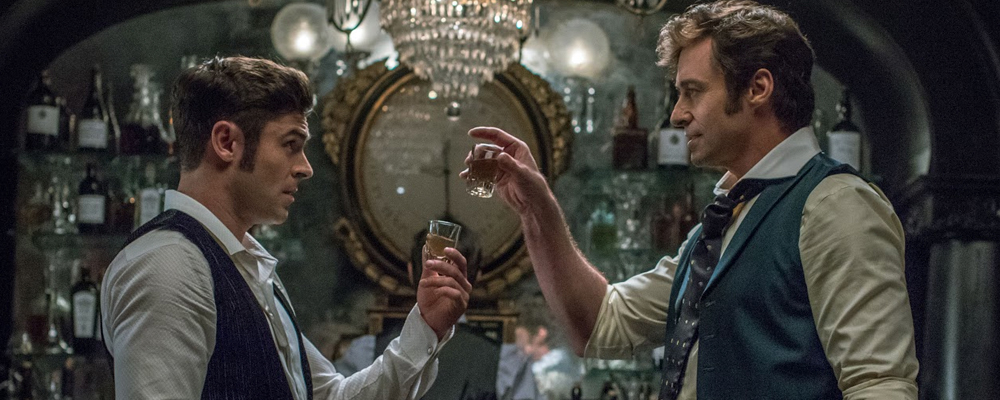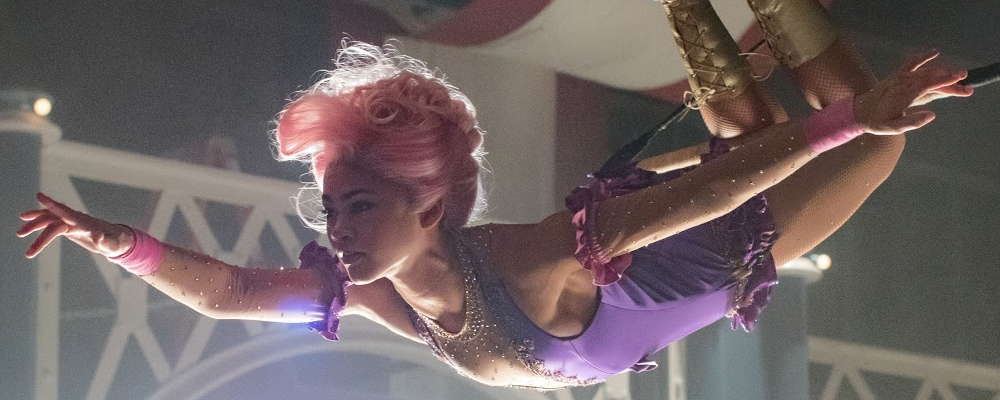Hugh Jackman Is Larger Than Life in Over-the-Top Musical ‘The Greatest Showman’
Aaron Berke
“The Greatest Showman” offers a bag full of parlor tricks. Like P.T. Barnum himself, the film creates dazzle and excitement, at the expense of the audience’s better judgment. It’s a quintessential Hollywood musical, with the most cliched through line a magician could conjure. Yet its observations on the role of ‘the other’ in society do grant the film a hair of topicality. By far the greatest aspect of “The Greatest Showman,” is its capacity to move and delight, a trick Hugh Jackman knows how to perform like the back of his hand.
The fictionalized PT Barnum’s journey begins like most fictionalized musicals, with a boy and a girl. Barnum is the son of a servant of a rich London nobleman, whose daughter, Charity, Barnum fancies. The young Barnum manages to woo the girl with his zany sense of humor, and the two set off to the beach together, despite her parents’ foul treatment of Barnum. The enthusiastic young Barnum proclaims his intent to give Charity the world, once he’s made something of himself.
One Hollywood montage later, and Barnum grows up to be Hugh Jackman, while Charity grows into Michelle Williams. They have two young kids, and Barnum wants to give them the world, just like he promised Charity. He prepares to make his mark by opening a museum with a rather unusual exhibition. It features the Bearded Lady (Keala Settle), the Trapeze Twins (Zendaya and Yahya Abdul-Mateen II), and Little Tom Thumb (Sam Humphrey), along with many other oddball characters. Barnum gives them all a home and place they can be themselves. Best of all, they’re a hit with the New York crowds for most everyone – except the aristocratic white patriarchy, who label Barnum a fraud. As Barnum’s lust for the limelight and social acceptance overwhelms him, he begins to move away from his chosen family and towards an idealized version of himself and the status he’s wanted since he was a little boy.
It’s almost laughable how “The Greatest Showman’s” script follows the Hollywood formula beat by beat. Make no mistake, this is a heavily, heavily fictionalized account of Barnum’s life, complete with a rise, fall and redemption that was patterned after every single Hollywood movie. Barnum’s fixation on proving himself more than a fraud doesn’t even make sense when you consider that his show consists of real people performing. Barnum’s arc sticks so much to formula that it ignores its movie’s own divergences from formulaic tropes.
At a brisk 106 minutes, the movie whizzes from plot point to plot point so fast that they barely register. However, once you realize that “The Greatest Showman” doesn’t need you to take it seriously, the film can become enjoyable. Hugh Jackman is largely responsible for this. He plays Barnum with such emotional conviction and enthusiasm, you can almost convince yourself that a real person did in fact live his life according to a Screenwriting 101 syllabus. Jackman is ever the showman, and his musical aptitude makes him pitch perfect to play this larger-than-life rendition of Barnum.
The songs, written by “La La Land” composers Justin Paul and Benj Pasnik, are sadly nowhere near as hummable as their previous scoring effort. The songs are merely serviceable, with only the title song “The Greatest Show” delivering anything near the pizazz and luster the film’s title promises. Luckily, the cinematography and choreography make up for the lackluster songs. There are several memorable show-stoppers, especially the ballad “Rewrite the Stars” between Zac Effron’s Phillip Carlyle and Zendaya’s Ann Wheeler. The duet makes full use of the trapeze setting, as the would-be lovers circle around each other in a metaphorical representation of the racial and social barriers that separate them.
This area is where “The Greatest Showman” tries and partially succeeds in elevating itself above its genre. The assemblage of would-be circus freaks are presented as real people who are simply different. The movie never talks down to them, and is highly critical of the townsfolk who berate them. “The Greatest Showman” very consciously promotes social acceptance, and though the message is on the nose, the effort is still appreciated. The acceptance theme takes center stage during a musical centerpiece, “This is Me,” where the Bearded Lady leads a march of the Barnum performers through the streets. They declare themselves proud of who they are for the whole town to see, and its delightfully rousing. It’s during scenes like this that the showy movie puts itself to a special use beyond the confines of a Hollywood musical, giving voice to the plight of ‘the other.’
It is perhaps apt that “The Greatest Showman” succeeds most when it fully embraces the odd and fantastical. PT Barnum is depicted as a performer with an endless bag full of tricks, and when the movie takes on the presentational quality of Hugh Jackman’s performance, it becomes a delightfully distracting entertainment. But it can only fool you for so long before you’re reminded that this is a Hollywood movie that lacks the imagination of its protagonist. Still, the movie gets points for Hugh Jackman’s delightful performance and a memorable commentary on the importance of social acceptance. This is really the only element that warrants the movie’s release in the year 2017. Otherwise, “The Greatest Showman” reflects a Hollywood storytelling model that’s out of touch, but always charming.
“The Greatest Showman” opens Dec. 20 in theaters nationwide.



